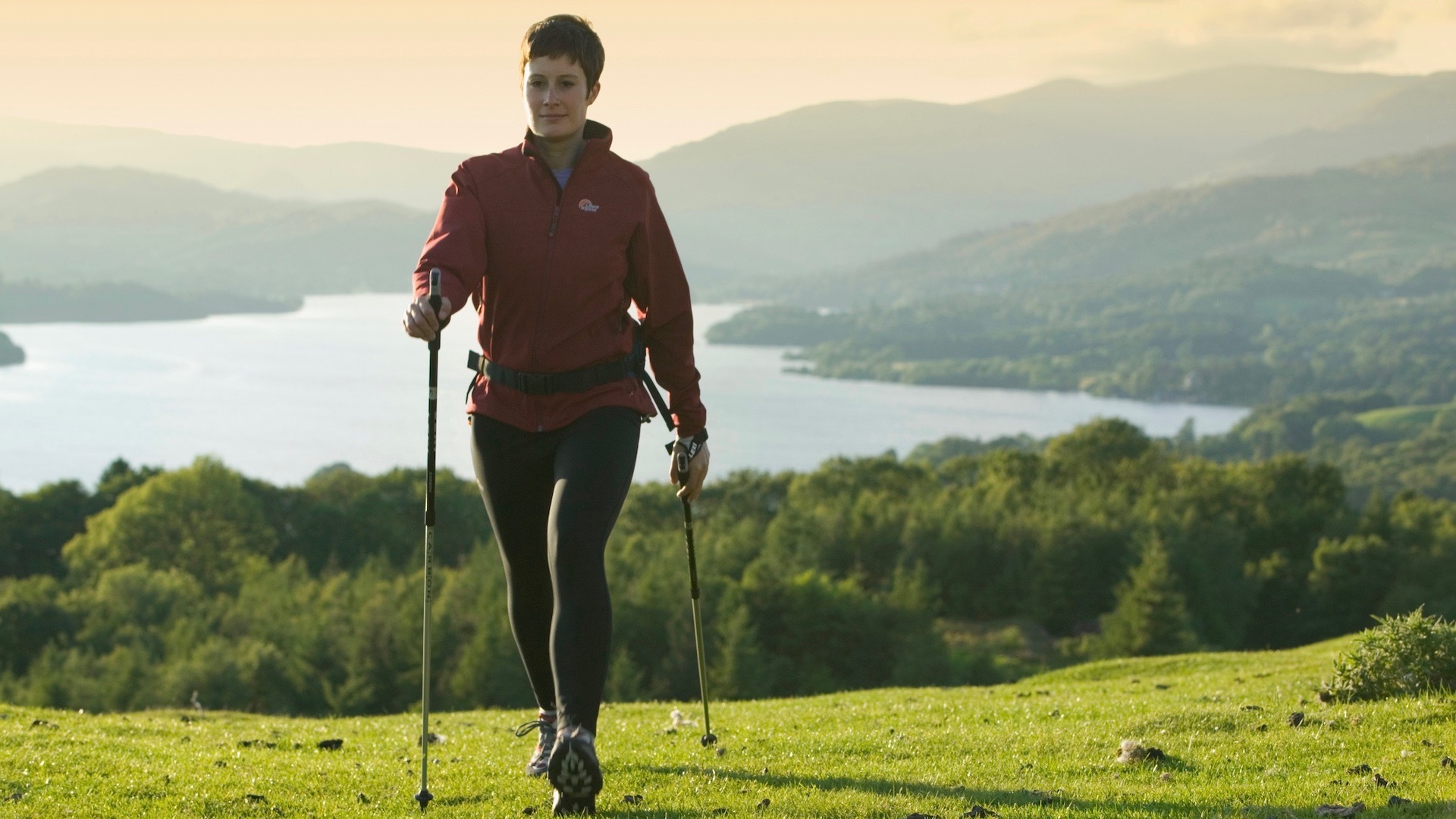What is Nordic walking – and why it might be a great activity for you
Nordic walking offers full-body exercise and burns more calories than ordinary walking

Nordic walking is a style of walking that uses poles to enhance the movement of the body. It’s also a more fluid, faster and dynamic form of walking.
The activity is a complete body work out that it is claimed can burn up to 46 per cent more calories than walking alone.
The activity uses trekking poles, which means the upper body muscles receive a good work out and the lower joints are better supported.
The rise of Nordic walking
Nordic walking is thought to have originated in the 1930s in Finland. At that time, competitive cross-country skiers started to use their poles for off-season training when there was no snow.
World Nordic Walking Day was launched in 1948 and the popularity of the sport grew from there.
Today, Nordic walking is said to be the “fastest growing fitness activity in the world”, according to Nordic Walking UK. It’s estimated that more than 10 million people globally enjoy it year round.

How do I go Nordic walking?
To start with, it’s a good idea to join a Nordic walking class or taster session. There are plenty of options and you might want to check out the American Nordic Walking Association, British Nordic Walking and Nordic Walking Scotland, for example.
All the latest inspiration, tips and guides to help you plan your next Advnture!
It’s important to learn the correct technique for Nordic walking to gain the most benefits. It will be more enjoyable if you know how to use trekking poles, plus you will meet likeminded people in classes.
Nordic walkers use specialist poles that have a smaller diameter grip than trekking poles. When planting the poles, the walker angles them backwards and then pushes behind the hip to give forward propulsion.
The hand opens and a special strap holds the pole in the correct position for when the pole is pulled forward for the next plant.
Nordic Walking is an easy way to exercise the entire body and gain excellent health benefits.
For people who are already active, Nordic walking is an ideal addition to other forms of exercise because it provides additional benefits to "ordinary" walking, such as upper body strength. The sport is also ideal for those who haven’t been active for a while because you can start by walking short distances and then building up endurance.
Older people and those who may be unsteady on their feet find the poles give extra support and confidence.
In addition to your poles, all you need are your best hiking shoes and a pair of the best hiking socks to keep your feet comfortable and sweat-free while you walk.
7 benefits of Nordic walking
1. Nordic walking exercises 90 per cent of the muscles of the body, not just the 40 per cent used in ordinary walking.
2. Nordic walking offers a good cardiovascular training effect.
3. The sport is said to us up to 46% more calories compared to ordinary walking.
4. Nordic walking strengthens bones without causing joint trauma.
5. This form of walking releases neck and back tension and improves posture and gait. Nordic Walking also encourages a more upright posture.
6. Nordic walking rotates the trunk and enhances the mobility of the spine.
7. Nordic walking strengthens the muscles of the back and abdomen so it is great for the all-important core.
Nordic walking kit
Nordic walkers use the gear as hill walkers, including hiking boots or hiking shoes, comfortable hiking pants or shorts and base layers, as well as a windproof or waterproof jacket.
The key essential item is Nordic walking poles. Poles should be lightweight and offer a good balance and swing when walking with them. An open glove attached to the pole handle allows walkers to easily swing the pole like a pendulum in rhythm with their progress forwards.

Fiona Russell is a widely published adventure journalist and blogger, better known as Fiona Outdoors. She is based in Scotland and is an all-round outdoors enthusiast with favorite activities including trail running, mountain walking, mountain biking, road cycling, triathlon and skiing (both downhill and backcountry). Aside from her own adventures, Fiona's biggest aim is to inspire others to enjoy getting outside and exploring, especially through her writing. She is also rarely seen without a running skort! Find out more at Fiona Outdoors.
